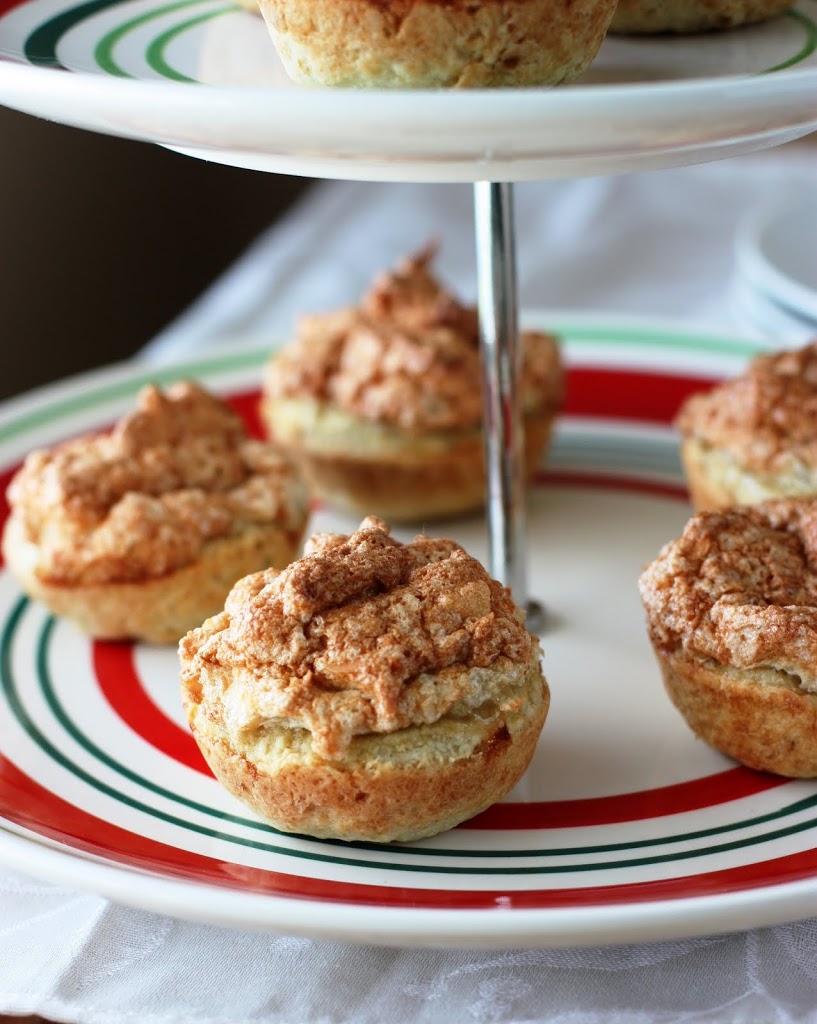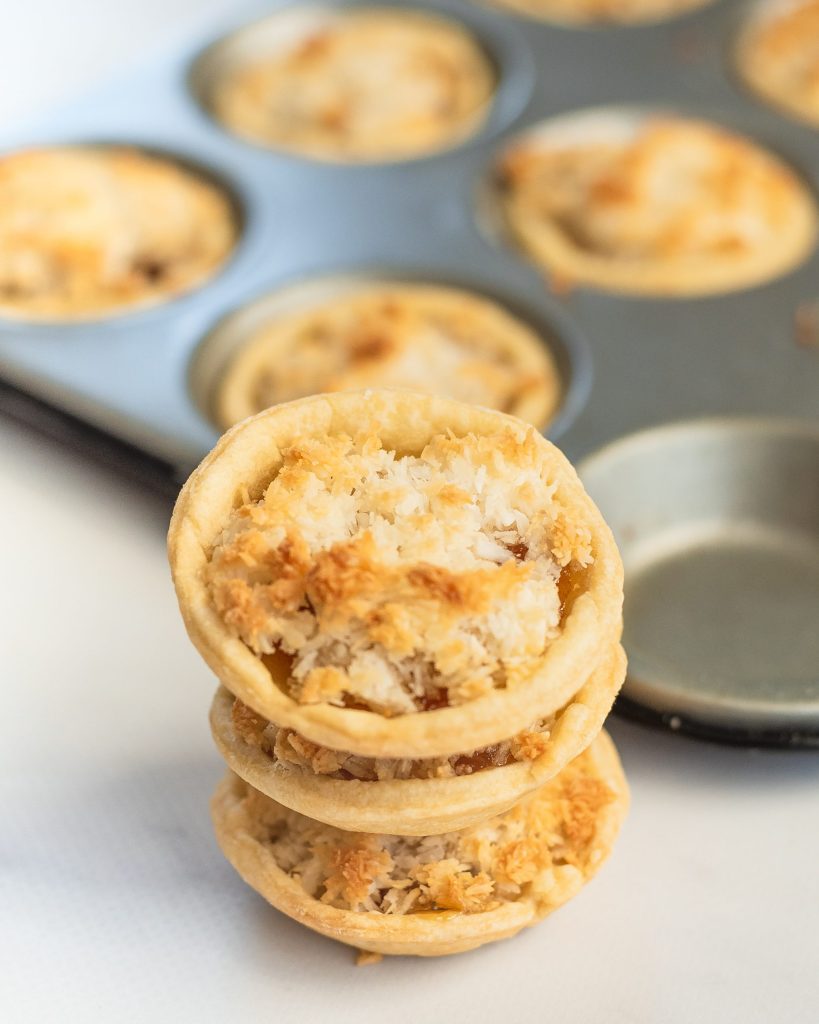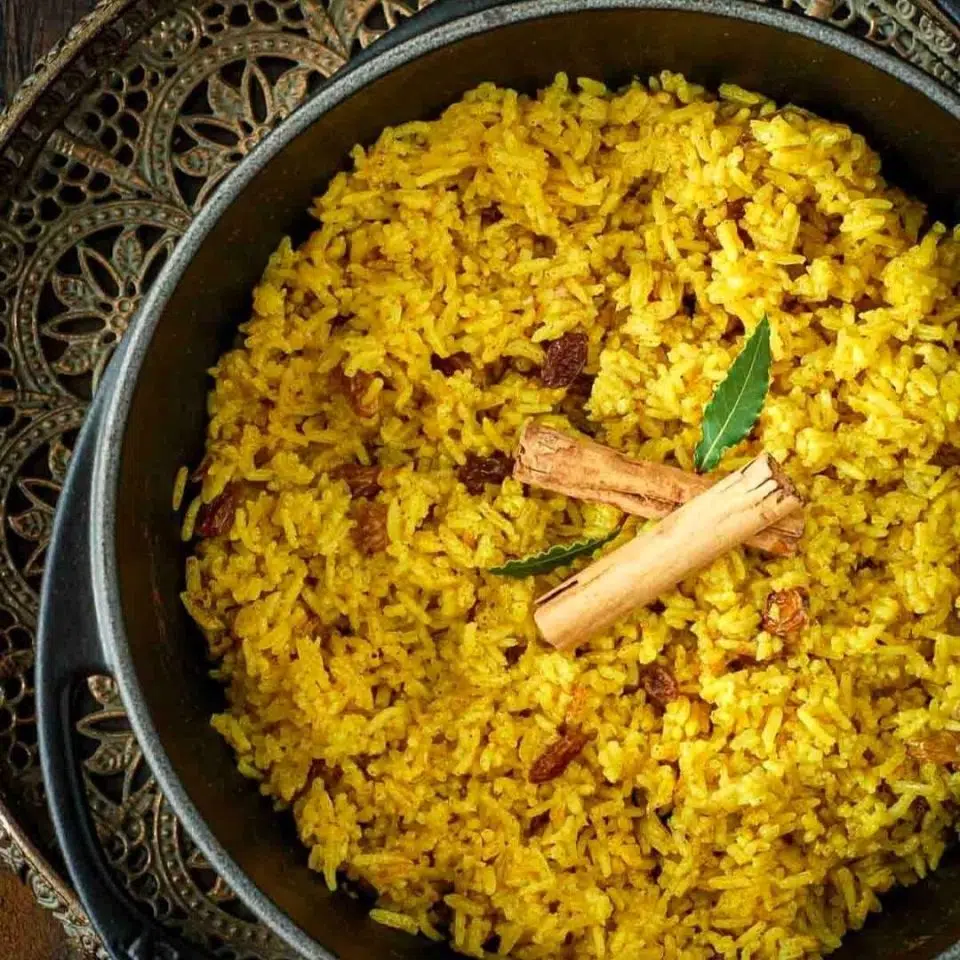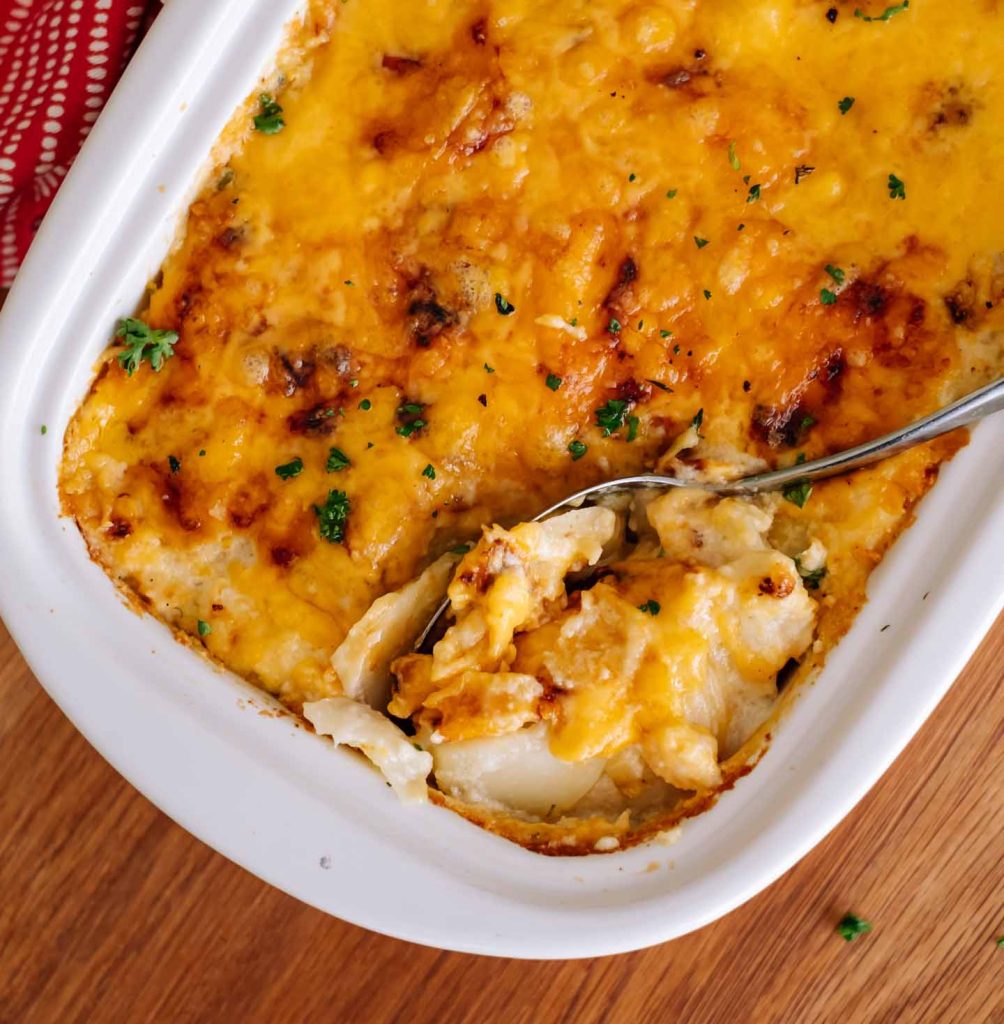Savor South Africa’s Traditional Flavors: Hertzoggies, Geelrys, and Classic Potato Bake
The tartlet known as the “Hertzogkoekie” is named after J. B. M. Hertzog, a prominent South African politician who served as Prime Minister from 1924 to 1939 and was also a Boer War General. It is believed that these tartlets were a favorite treat of his, and his supporters famously baked, served, and sold them to express their political allegiance.
According to one account of the dessert’s origin, it is said to have been created by the Cape Malay community as a gesture of support for Hertzog, who had pledged to grant women the right to vote and equal rights to the colored community during the 1920s. However, when Hertzog only fulfilled the promise regarding women’s suffrage in 1930 and not the latter, the community began making the tartlets with a distinctive brown and pink icing known as “twee gevreetjie” (Afrikaans for “hypocrite”), as a sign of their disappointment and protest.
Another theory suggests that the dessert’s name and creation stem from the Afrikaans tradition, post-Second Anglo-Boer War, of naming confections after national heroes. This practice honored individuals who played significant roles in South African history, contributing to the cultural significance of the Hertzogkoekie within the context of Afrikaans heritage.
Hertzoggies, also known as Hertzog Cookies, are a traditional South African pastry named after J.B.M. Hertzog, a former Prime Minister of South Africa. These sweet and coconut-filled tartlets are a popular treat often enjoyed during special occasions and holidays. Here’s a recipe for making Hertzoggies:

Hertzoggies (Hertzog Cookies) Recipe:
Ingredients:
For the Pastry:
- 2 cups all-purpose flour
- 1 cup unsalted butter, cold and cubed
- 1/2 cup sugar
- 1 large egg
For the Filling:
- 1 cup desiccated coconut
- 1/2 cup apricot jam
- 2 large egg yolks
- 2 tablespoons sugar
- 1 teaspoon vanilla extract
For Topping:
- 2 tablespoons apricot jam, warmed
- Additional desiccated coconut for sprinkling
Instructions:
- Preheat Oven:
- Preheat your oven to 350°F (180°C). Grease a muffin tin or tartlet pans.
- Prepare Pastry:
- In a food processor, combine the flour, cold cubed butter, and sugar. Pulse until the mixture resembles breadcrumbs.
- Add the egg and continue pulsing until the dough comes together. If needed, add a tablespoon of cold water.
- Turn the dough out onto a floured surface and knead lightly. Wrap it in plastic wrap and refrigerate for about 30 minutes.
- Make Filling:
- In a bowl, mix together the desiccated coconut, apricot jam, egg yolks, sugar, and vanilla extract until well combined.
- Shape Pastry:
- Roll out the chilled pastry on a floured surface. Cut circles to fit into the tartlet pans.
- Press the pastry circles into the greased pans, forming small tartlet shells.
- Fill Tartlets:
- Spoon the coconut filling into each pastry shell, spreading it evenly.
- Bake:
- Bake in the preheated oven for about 15-20 minutes or until the pastry is golden brown.
- Glaze and Garnish:
- While still warm, brush the top of each tartlet with warmed apricot jam.
- Sprinkle additional desiccated coconut on top as a garnish.
- Cool and Serve:
- Allow the Hertzoggies to cool in the pans before transferring them to a wire rack to cool completely.

TIPS FOR MAKING HERTZOGGIES
- Refrigerate the pastry once it has been cut out and pressed into the patty pan.
- Make sure the consistency of the apricot jam is not too think before adding dollops to the bottom of each tartlet casing.
- Don’t add too much jam to each casing as it will ooze out on the side once it bakes in the oven.
- Make sure that the eggs are fresh.
- Use a glass or metal bowl to whisk the egg whites.
- Before whisking the egg whites, make sure the mixing bowl is clean as well as the whisk or beater attachments are clean. Any form of dirt or fat residue will affect the volume of the meringue.
- In order for the coconut meringue to hold its shape, whip the eggs whites to stiff peaks.
Serving Suggestions:
- Hertzoggies are delightful served with tea or coffee and are often enjoyed as a sweet treat during festive occasions.
- Store in an airtight container once cooled.
Enjoy these sweet and coconut-filled Hertzoggies, a classic South African treat that adds a touch of sweetness to your dessert repertoire!
Famous South African Yellow Rice – Geelrys
eelrys, also known as Yellow Rice, is a South African dish that is characterized by its vibrant yellow color. It’s a flavorful and aromatic rice dish often served as a side to complement various main courses. The yellow color is achieved by cooking the rice with turmeric, and the dish is subtly sweetened with sugar and often enriched with raisins. Here’s a simple recipe for making Geelrys:
History
The origins of South African yellow rice, known as “geelrys” in Afrikaans, can be traced back to the Cape Malay community in South Africa. The Cape Malay community emerged in the Cape of Good Hope region, primarily influenced by the Indonesian and Malay cultures.
Initially, the community formed as a result of the Dutch East India Company exiling enslaved individuals who resisted the company’s rule in the Dutch East Indies (now Indonesia) and Dutch Malacca (part of present-day Malaysia) to a settlement along their trade route. Over time, the community expanded to include enslaved people from various other cultures, particularly those of Muslim backgrounds from the region.

As the Cape Malay community evolved, it adopted elements from different cultures while retaining its own traditions. While the original language spoken was Malay, over time, Afrikaans and English became more prevalent. Despite the linguistic shift, many traditions from the early days, including culinary practices, were preserved.
Yellow rice, a staple dish in the Cape Malay cuisine, reflects the community’s rich culinary heritage. Traditionally served as an accompaniment to dishes like bobotie, yellow rice has become a versatile dish enjoyed across South Africa and beyond. Its vibrant color and fragrant flavors make it a popular choice to complement a variety of main courses, showcasing the enduring influence of the Cape Malay community on South African cuisine.
Geelrys (Yellow Rice) Recipe:
Ingredients:
- 2 cups long-grain white rice
- 1 to 2 teaspoons ground turmeric
- 1/4 cup sugar
- 1 cinnamon stick
- 3-4 cardamom pods (optional)
- 1/2 cup raisins (optional)
- 4 cups water
- Salt to taste
- Butter for serving (optional)

Instructions:
- Rinse the Rice:
- Rinse the rice under cold water until the water runs clear. This helps remove excess starch.
- Infuse Turmeric:
- In a pot, combine the rinsed rice, ground turmeric, sugar, cinnamon stick, cardamom pods (if using), and raisins (if using). The turmeric gives the rice its yellow color.
- Add Water:
- Pour in 4 cups of water and add a pinch of salt to taste.
- Cook the Rice:
- Bring the mixture to a boil over medium heat. Once boiling, reduce the heat to low, cover the pot with a lid, and simmer for about 15-20 minutes or until the rice is tender and has absorbed the water.
- Steam:
- Turn off the heat, fluff the rice with a fork, and let it steam for an additional 5-10 minutes with the lid on.
- Serve:
- Remove the cinnamon stick and cardamom pods if used. Serve the Geelrys hot as a side dish.
- Optional:
- You can add a small pat of butter on top of the rice before serving for extra richness.

Serving Suggestions:
- Geelrys is often served with dishes like bobotie, curry, grilled meats, or roast chicken.
- Garnish with chopped fresh cilantro or parsley for a burst of freshness.
Geelrys brings a burst of color and flavor to your table, making it a wonderful accompaniment to a variety of main courses. Enjoy this South African classic as part of your next meal!
Classic Potato Bake a South African Delicacy
eese. This dish is baked until the potatoes are tender and the top is golden brown and bubbling. Here’s a simple recipe for making a classic potato bake:
The origins of Potato Bake, or “Aartappelgebak” in Afrikaans, remain somewhat elusive despite its widespread popularity across South Africa. Potatoes were first introduced to the region by Jan van Riebeeck, the initial Dutch colonial administrator, during the 17th century. The term “aartappel” originates from Dutch, translating to “earth apple,” reflecting the potato’s fundamental role as a staple crop in the country’s culinary landscape.
While the exact genesis of Potato Bake is uncertain, it likely emerged as a fusion of European culinary influences, particularly from French gratin dishes, combined with local preferences for hearty and comforting fare. Although the precise historical details may be speculative, Potato Bake has undoubtedly become an integral part of South African cuisine, cherished for its rich and satisfying flavors.

Potato Bake is a versatile dish that appeals to a wide audience. It serves as an excellent accompaniment to a braai (the South African equivalent of a barbecue), a comforting family meal, or a festive holiday feast. Its creamy and indulgent taste makes it particularly popular during the colder months as a beloved comfort food.
In terms of nutritional content, Potato Bake provides a substantial source of energy and nutrients. A typical serving for four people contains approximately 600 calories, with around 60g of carbohydrates, 6g of sugars, 35g of fats, 15g of protein, and 5g of fiber. While it is high in calories and fats, Potato Bake also offers valuable dietary fiber and protein, contributing to its overall satisfaction as a hearty and fulfilling dish.
Classic Potato Bake Recipe:
Ingredients:
- 4 large potatoes, peeled and thinly sliced (about 1/8 inch thick)
- 2 cups heavy cream
- 2 cloves garlic, minced
- Salt and black pepper to taste
- 1 cup grated cheese (Gruyere, Cheddar, or Parmesan work well)
- Butter for greasing
Instructions:
- Preheat Oven:
- Preheat your oven to 375°F (190°C). Grease a baking dish with butter.
- Prepare Potatoes:
- Peel the potatoes and thinly slice them using a sharp knife or a mandoline.
- Prepare Cream Mixture:
- In a bowl, mix the heavy cream, minced garlic, salt, and black pepper. Adjust the seasoning to your taste.
- Layer Potatoes:
- Arrange a layer of sliced potatoes in the greased baking dish, slightly overlapping the slices. Pour a small amount of the cream mixture over the potatoes.
- Repeat the layering process until all the potatoes are used, ensuring that each layer is coated with the cream mixture.
- Top with Cheese:
- Sprinkle the grated cheese evenly over the top layer of potatoes.
- Bake:
- Bake in the preheated oven for approximately 60-75 minutes or until the potatoes are tender, and the top is golden brown and bubbling.
- Rest Before Serving:
- Allow the potato bake to rest for a few minutes before serving. This helps the dish set and makes it easier to portion.
- Serve:
- Serve the classic potato bake as a delicious side dish alongside your favorite main course.

Serving Suggestions:
- Garnish with chopped fresh herbs such as parsley or chives before serving.
- Serve the potato bake with roasted meats, grilled chicken, or as part of a holiday feast.
Classic Potato Bake is a timeless and comforting dish that complements a variety of main courses. Its creamy, cheesy layers make it a crowd-pleaser, and it’s a wonderful addition to festive meals and family gatherings.
Related Reading South African Culinary Delights: Amarula Don Pedro, Springbokkie, Braai/Shisa Nyama Tradition, and Melkkos Recipe
Add a Comment
You must be logged in to post a comment.
